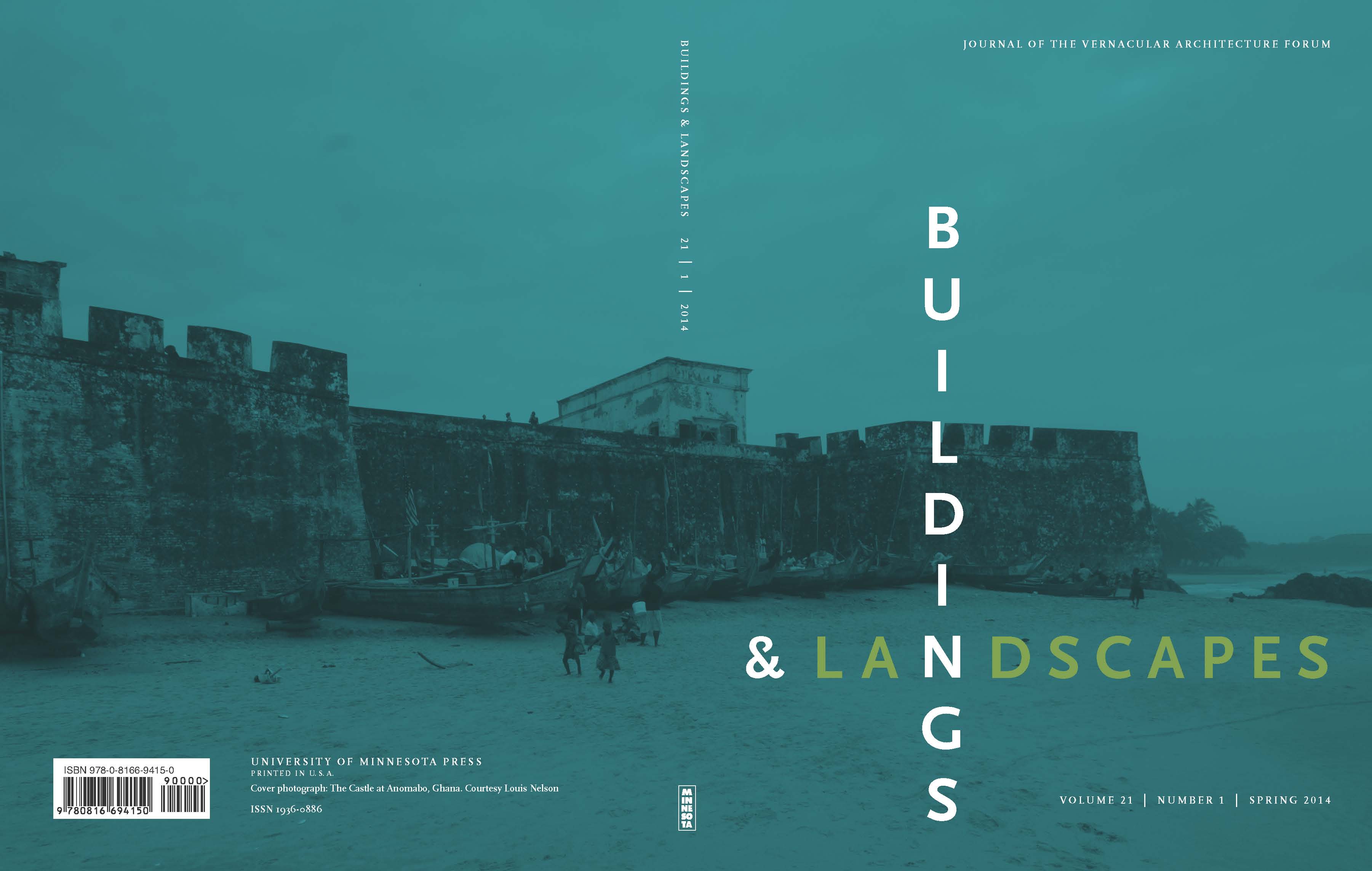by Chris Wilson, VAF President
This spring will be a season of transition for Buildings & Landscapes. And a good time to pause and take stock of the evolution of the journal over the past six years.
With the spring issue of B&L, Marta Gutman completes six years as co-editor. Fortunately for the VAF, a scholar of equal quality, Anna Andrzejewski has agreed to take her place. At the same time, Andrew Sandoval-Strausz is stepping down after six years as review editor to be replaced by Matt Lasner.
The Vernacular Architecture Forum’s first scholarly publication, Perspectives in Vernacular Architecture, appeared every two or three years, totally fourteen volumes between 1982 and 2006. The organization chose to replace that series with an annual journal, Buildings & Landscapes, in 2007. The first coeditors, Howard Davis and Louis P. Nelson took it to two issues a year in 2009.
Since the Spring 2010 issue, Gutman and Sandoval-Strausz (working with B&L co-editors Nelson, through 2012, and Cynthia Falk, starting in 2013) have brought increased scholarly breadth and depth to the journal. While a steady flow of articles on colonial to nineteenth century American topics, on fieldwork and preservation continue traditional VAF interests, the editors also have worked to reflect the growth of vernacular scholarship on the twentieth and twentieth centuries, on urban and suburban settings, on Latino and Asian cultural landscapes, and those of African Americans since slavery.
The addition of two or three articles a year on international topics parallels the much expanded coverage of South Asian, African and Latin American work that Sandoval-Strausz has built into the review section. “The two main changes,” wrote Sandoval-Strausz in response to my email query, “are the increase in the absolute numbers of reviews, and the geographic diversification.” From four book reviews in a typical early B&L issue, one now finds eight to ten reviews per issue. Likewise, the expansion of the journal from 120 to 184 pages during this period has also accommodated new columns, the Viewpoint essay, Research Notes and Object Lessons.
A more robust B&L presence on the VAF website includes the contents of past issues, along with manuscript preparation and submission guidelines. Behind this public face, procedures for peer reviews of manuscripts, the preparation of the digital edition and of article images and supplemental visual material (hosted by JSTOR) have been standardized. Starting as the first Image Editor in 2014, Emily Rinaldi now coordinates technical specifications and permissions.
“We always meet our deadlines,” writes Gutman with a hard working pride, “and the University of Minnesota Press holds us up as a model to other journals.” “When I started,” she adds, “I hoped that B&L could give a gentle nudge to the VAF to move forward; that it would attract younger scholars to VAF, and new kinds of scholarship.”
The synergy between the annual VAF conference and Buildings & Landscapes (and before it, Perspectives), it seems to me, have been essential to the organization’s vitality. Many attend a first conference and deliver a paper. They mature intellectually, in part, by working with the journal editors to turn that talk into a first scholarly article, then move into leadership roles in the organization. The number of past contributors to B&L now serving on the board is a testament to the importance of the independent voice of B&L within the VAF.
We owe a particular debt of thanks in this season of transition for Buildings & Landscapes to Marta Gutman and Andrew Sandoval-Strausz for their hard work and intellectual vision.